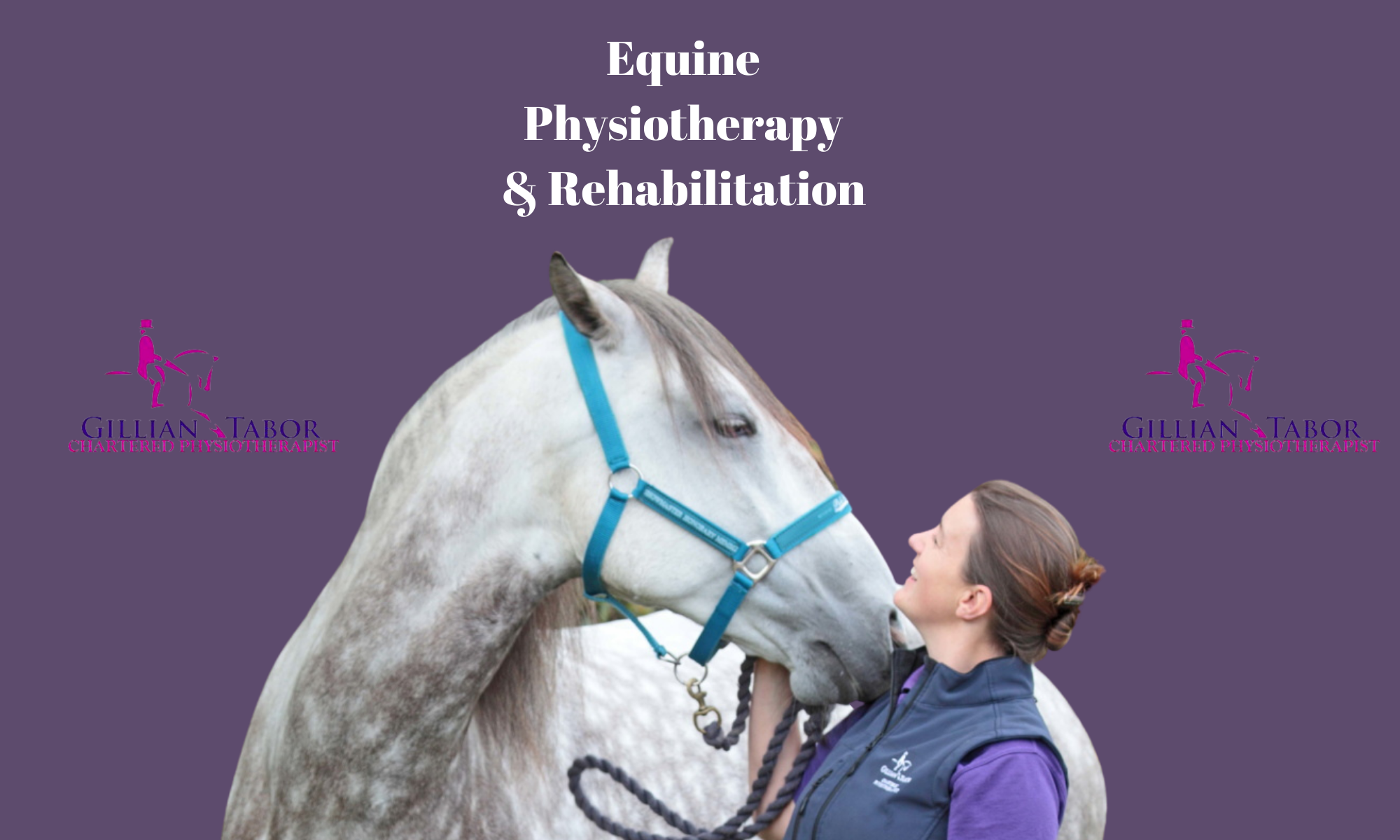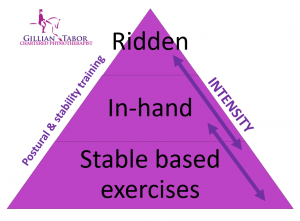Bend aka lateral flexion or side bending is one of the much talked about movements in the ridden horse. As a definition, bend is where the horse has an inner, hollow, shorter in length, concave side, and a bowed, longer convex, outer side. In dressage the horse is considered having correct bend when they are bent in the direction of the circle and with even bending from nose to tail, following the line of the circle. This means that on a smaller circle there would be more bend than on a larger circle and the horse would be straight, i.e. no bend on when moving on a straight line.
Bend, especially ‘correct’ in dressage terms is very difficult to achieve due to the anatomy of the horse and especially because of the structure of the spinal vertebra. These bony blocks are wildly different shapes throughout the spine because they are adapted for different functions in the different regions. The cervical or neck vertebra have the ability to achieve large lateral flexion ranges of movement and this opportunity decreases in the middle or thoracic region and is even less in the lumbar region behind the saddle area.
Lateral flexion in the top of the neck is termed ‘stelling’ by some training groups, and it refers to lateral movement of the skull on the first cervical vertebra. This essentially is the small turn that allows you to see the inside eye, if you were onboard your horse. Further back in the neck, the combined movement of the region means the horse has the mobility to turn the head around to face its tail. This is far more movement than is needed for the ridden horse but is very useful to the horse in its day-to-day life. Usually bend when training our horse requires a small proportion of this, with keeping the head vertical, so ears level, as they horse turns to the direction of the circle.
In the region between the withers and mid back, there is less bend due to the restriction of the ribcage which functions to protect the internal organs. This area of the back is also less mobile to allow the propulsion from the hindquarters to be converted into forward locomotion, and movement of the forehand. Without this stable region the horse would be unable to support the weight of the intestines which is needs for digestion of the low nutrient forage it has evolved to eat. This is also a benefit for us as we can sit on this platform.
The movement of the back, as within the neck, is not only lateral flexion but combined with rotation of the spinal segments. Therefore, the bend in the back also involves the rotation of the vertebra and the ribs that are attached to it. As there is increasing bend, the lateral flexion and rotation move the ribcage to the outside. This is very clear to watch if you stand behind a horse carrying out a carrot stretch to one side – you will see a very clear movement of the ribs to the opposite direction.
The movement of the ribcage is accompanied by movement of the shoulder blades around the front portion of this area. The thoracic sling is the term for the muscular attached of the scapular to the trunk, and in lieu of collar bones, allows the sliding and gliding of the forelegs via their shoulder blade attachments, around the ribs.
Further back, there is also rotation of the lumbar vertebra to achieve the few degrees of bend they do to the overall movement of the whole body. This area is restricted in lateral movement due to the wide and flat projections that reach out sideways. This are this way to allow a large area for muscle attachment, as this area holds the region’s largest muscles which again are part of the processes of generating movement sideways. The thoracic sling, and the attachment of relatively flat scapula on the barrel of the trunk, allows the limbs to move in the opening, abduction, and closing, adduction, directions. These limb movements operate to increase the movement around a turn. In dressage the inside foreleg is expected to open and reach into the bend to maintain a vertical body which is a very different action to a horse barrel racing, that brings the legs under the body and leans into the turn to maintain direction and speed.
The junction between the spine and the pelvis often looks to have a large amount of bending, and although it does to a small amount, it is contributing to the whole-body movement mostly with rotation. The inside point of hip, which is correctly termed the tuber coxae, lowers as it comes forward, bringing that side of the pelvis with it. This allows the inside hind to step forward and slightly under the body. The foot placement forward and towards the midline to support the bending and the effects of the movement of the body on the turn. As the horse bends, there are the effects of gravity and centripetal force to consider.
In essence the horse does not bend equally from nose to tail but due to the structure and function of the body, the horse can negotiate going around in circles in very clever ways!

